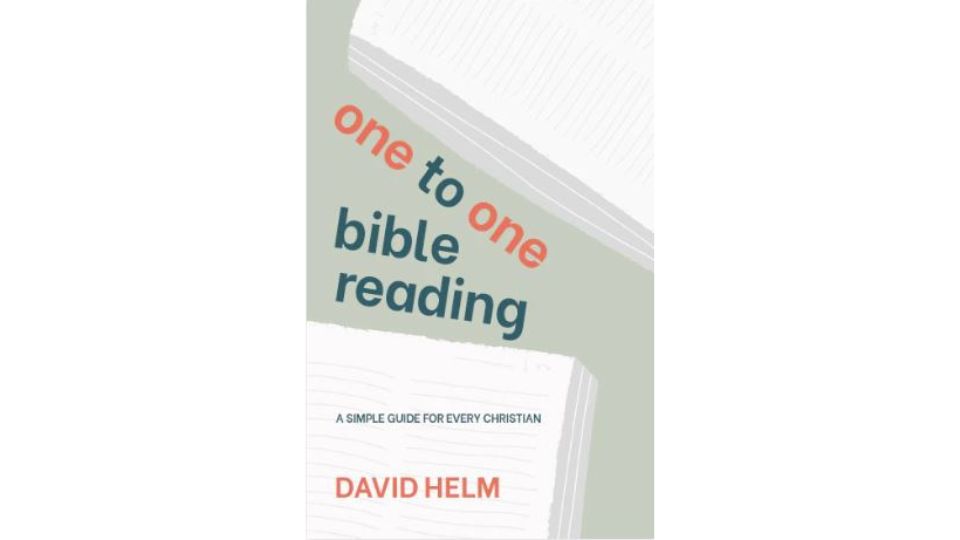One to One Bible Reading: Guide for Everyday Christians
Reading the Bible one-to-one can be initiated by any Christian. David Helm covers the who, what, how, and why of one-to-one Bible reading.

One to One Bible Reading is a 103 page book written by David Helm and published by Matthias Media in 2011. David Helm serves as senior pastor of Christ Church Chicago. He also serves as chairman of the board of directors for the Charles Simeon Trust, an organization which promotes practical instruction in preaching.
1. Purpose of One to One Bible Reading
The purpose of One to One Bible Reading is to suggest the activity of reading the Bible with another person one-on-one. The book aims to describe what this activity looks like and involves, who should do it, and why we should do it?
2. Content of One to One Bible Reading
The book starts by dispelling the myth that spiritual growth is an event we attend or a program we register for. Rather, spiritual growth involves spiritual disciplines like Bible reading, and we can guide one another by reading the Bible together one-to-one. Consider One-to-One Bible Reading's four benefits:
- Salvation: Reading the Bible one-to-one may be God's means for salvation.
- Sanctification: Reading the Bible one-to-one can built up and strengthen Christians on their road toward sanctification.
- Training: Reading the Bible one-to-one can "identify and train people for greater ministry responsibility."
- Relationship: Reading the Bible one-to-one can cultivate Christian friendship.
The initiator of reading the Bible one-to-one is usually a committed Christian. The other individual may be (1) a non-Christian, (2) a new Christian, (3) or a more mature Christian ready to lead.
The first step is to pray that "God will lead you to someone to whom he is already looking to reveal more of himself." The second step is to have boldness and invite someone to read the Bible with you. The third step is to plan to meet by setting up a meeting to get started.
During your meeting together, you may begin by praying for God to help you understand the Bible text. Then read the Bible passage out loud together. It is "best done by alternating between the two of you every few verses." Then discuss the text you have just read, but don't monopolize the conversation. Rather, be a good listener and ask questions ("What do you think?") and use open-ended statements. You don't need to know all the answers, and don't miss out on "being enriched by the joy of friendship, support and mutual encouragement." Be sure to spend some time discussing how both of you can apply the text to your lives. Conclude by praying again. Then confirm your calendar for your next meeting time.
For your first meeting, you may need to spend some time getting to know each other better. You will want to decide together on which book to read. Agree on the first three to four meeting times, and make sure the schedule is regular and realistic. Establish a duration of your partnership (i.e. 6 weeks, 3 months, 6 months). There is no obligation that preparatory work is needed. You are simply getting together to read the Bible and encourage each other. But if the two of you mutually decide to do some preparation, agree how much time you will invest in this (30–60 minutes is usually enough).
The book introductions two frameworks for Bible reading.
Swedish Method
- Read the passage aloud together.
- Read the passage individually and silently looking for a (1) "light-bulb" which is something particularly striking, (2) "question" which is anything hard to understand, and an (3) "arrow" which is anything pertinently applicable.
- Write down at least one thing but no more than three under each category.
- Share and discuss your "light-bulbs."
- Share and together work out answers your "questions."
- Share and discuss your "arrows."
COMA Method
- COMA is an acronym for Context, Observation, Meaning, and Application.
- Read the passage aloud.
- Ask questions about the background and surrounding context of the text.
- Ask questions prompted by direct observations on the text that was read.
- Ask questions about the interpretation and meaning of the text.
- Ask questions about the application of the text.
- The questions you commonly ask vary depending on the biblical genre you are reading.
Suggested Books to Read
- For non-Christians, consider a Gospel like the book of Mark or Genesis 1–12.
- For new Christians, consider a New Testament epistle like Colossians, Philippians, Titus, or 1 John.
- A sample eight session reading plan through Mark is as follows:
- Mark 1:1–15
- Mark 2:1–12
- Mark 3:7–35
- Mark 8:22–38
- Mark 10:17–45
- Mark 14:53–15:15
- Mark 15:16–39
- Mark 15:42–16:8
3. Commentary on One to One Bible Reading
I had not seriously considered reading the Bible with another person one-to-one until I read this book. My initial reaction is "this is a great recommendation." It promotes the Christian's commitment and priority to read the Bible. It also characterizes an accessible activity that can promote spiritual growth through evangelism, fellowship, and discipleship.
I found Helm's description of the Swedish Method easy to understand and implement. Although I have yet to embark on this activity as the author suggested, I can envision this as fruitful and practical for myself and everyday Christians.
4. Final Thoughts on One to One Bible Reading
For Christians who are already engaged in one-on-one and short group meetings centered around Bible study, this book does not provide new material besides the novel idea of One-to-One Bible Reading. But for everyday Christians who have not led any meeting, this is a very helpful book that guides the reader step by step on how to read the Bible with another person one-to-one.





